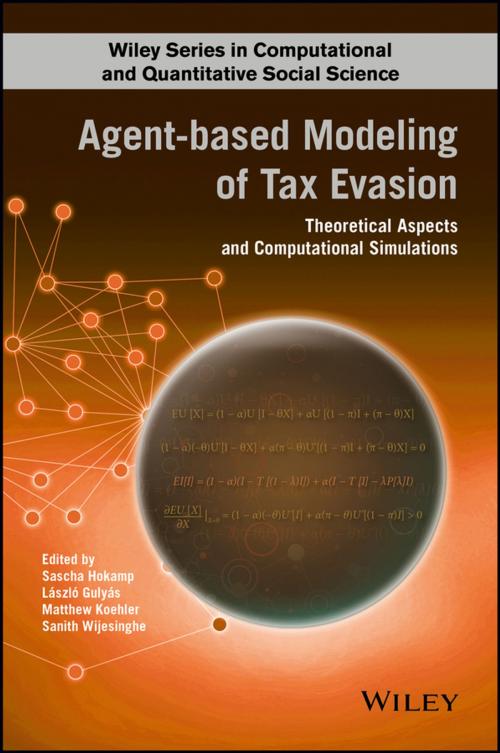Agent-based Modeling of Tax Evasion
Theoretical Aspects and Computational Simulations
Nonfiction, Science & Nature, Mathematics, Statistics| Author: | ISBN: | 9781119155706 | |
| Publisher: | Wiley | Publication: | February 12, 2018 |
| Imprint: | Wiley | Language: | English |
| Author: | |
| ISBN: | 9781119155706 |
| Publisher: | Wiley |
| Publication: | February 12, 2018 |
| Imprint: | Wiley |
| Language: | English |
The only single-source guide to understanding, using, adapting, and designing state-of-the-art agent-based modelling of tax evasion
A computational method for simulating the behavior of individuals or groups and their effects on an entire system, agent-based modeling has proven itself to be a powerful new tool for detecting tax fraud. While interdisciplinary groups and individuals working in the tax domain have published numerous articles in diverse peer-reviewed journals and have presented their findings at international conferences, until Agent-based Modelling of Tax Evasion there was no authoritative, single-source guide to state-of-the-art agent-based tax evasion modeling techniques and technologies.
Featuring contributions from distinguished experts in the field from around the globe, Agent-Based Modelling of Tax Evasion provides in-depth coverage of an array of field tested agent-based tax evasion models. Models are presented in a unified format so as to enable readers to systematically work their way through the various modeling alternatives available to them. Three main components of each agent-based model are explored in accordance with the Overview, Design Concepts, and Details (ODD) protocol, each section of which contains several sub elements that help to illustrate the model clearly and that assist readers in replicating the modeling results described.
- Presents models in a unified and structured manner to provide a point of reference for readers interested in agent-based modelling of tax evasion
- Explores the theoretical aspects and diversity of agent-based modeling through the example of tax evasion
- Provides an overview of the characteristics of more than thirty agent-based tax evasion frameworks
- Functions as a solid foundation for lectures and seminars on agent-based modelling of tax evasion
The only comprehensive treatment of agent-based tax evasion models and their applications, this book is an indispensable working resource for practitioners and tax evasion modelers both in the agent-based computational domain and using other methodologies. It is also an excellent pedagogical resource for teaching tax evasion modeling and/or agent-based modeling generally.
The only single-source guide to understanding, using, adapting, and designing state-of-the-art agent-based modelling of tax evasion
A computational method for simulating the behavior of individuals or groups and their effects on an entire system, agent-based modeling has proven itself to be a powerful new tool for detecting tax fraud. While interdisciplinary groups and individuals working in the tax domain have published numerous articles in diverse peer-reviewed journals and have presented their findings at international conferences, until Agent-based Modelling of Tax Evasion there was no authoritative, single-source guide to state-of-the-art agent-based tax evasion modeling techniques and technologies.
Featuring contributions from distinguished experts in the field from around the globe, Agent-Based Modelling of Tax Evasion provides in-depth coverage of an array of field tested agent-based tax evasion models. Models are presented in a unified format so as to enable readers to systematically work their way through the various modeling alternatives available to them. Three main components of each agent-based model are explored in accordance with the Overview, Design Concepts, and Details (ODD) protocol, each section of which contains several sub elements that help to illustrate the model clearly and that assist readers in replicating the modeling results described.
- Presents models in a unified and structured manner to provide a point of reference for readers interested in agent-based modelling of tax evasion
- Explores the theoretical aspects and diversity of agent-based modeling through the example of tax evasion
- Provides an overview of the characteristics of more than thirty agent-based tax evasion frameworks
- Functions as a solid foundation for lectures and seminars on agent-based modelling of tax evasion
The only comprehensive treatment of agent-based tax evasion models and their applications, this book is an indispensable working resource for practitioners and tax evasion modelers both in the agent-based computational domain and using other methodologies. It is also an excellent pedagogical resource for teaching tax evasion modeling and/or agent-based modeling generally.















